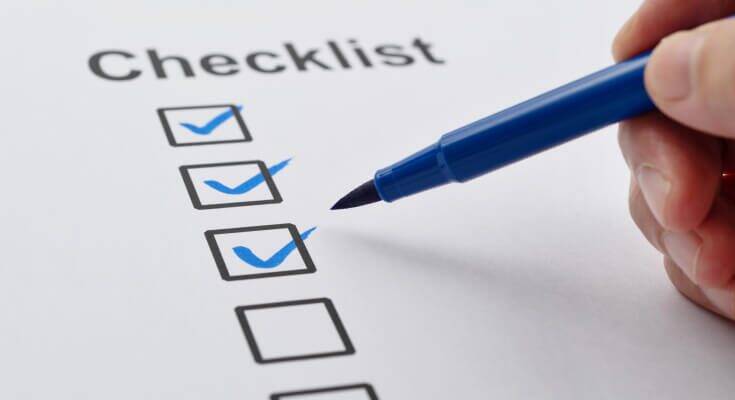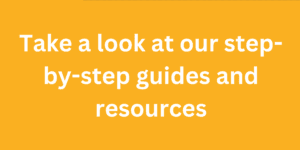Students rely on their executive functions everyday to get their schoolwork done, participate in extracurricular activities, and complete the basic tasks of day-to-day life. Yet executive function skills are not a dedicated part of a standard school curriculum, and many students find themselves falling behind because they lack these vital skills to succeed.
With the help of parents and educators, students with executive dysfunction can use executive function checklists to better understand what skills they are missing and also keep up with their own executive function practices, putting different techniques into practice to develop their executive functioning.
To further support students struggling with executive dysfunction, the expert team at Effective Students created a time management worksheet, available as a free download for any student, educator, or parent.
This time management worksheet is just one step of maintaining an executive function skills checklist for students. In this article, we outline the basics of executive dysfunction along with the benefits of these types of checklists.
How Executive Dysfunction Affects Students
According to the Annual Review of Psychology, executive function refers to “a family of top-down mental processes needed when you have to concentrate and pay attention.” Executive function skills work together to help us manage all the information and impulses in our brains, letting us prioritize tasks, make decisions, and plan ahead.
Executive dysfunction refers to weaknesses in the essential cognitive workflows required to complete executive function skills. A student with executive dysfunction may be unable to organize their thoughts and manage their time, as they lack the ability to create a structured plan of action and manage their projects and tasks.
Executive function skills are often not typically explicitly taught, leaving students with executive dysfunction feeling as if they’re bad at school with no way to improve. Fortunately, through academic coaching and study skills development, these students can work on their executive functioning skills and overcome these challenges.

ADHD and Executive Dysfunction
If you’ve ever wondered what the difference is between ADHD and executive dysfunction, you’re not alone. The two terms share much overlap, but, by understanding the key differences, you can better help students affected by ADHD, executive dysfunction, or, as is often the case, both.
While executive dysfunction refers to particular cognitive processes, ADHD (as well as ADD) is a diagnosis found in the The Diagnostic and Statistical Manual of Mental Disorders (Fifth Edition), where ADHD is described as “persistent pattern of inattention and/or hyperactivity–impulsivity that interferes with functioning or development.”
ADHD and executive dysfunction often show up together in a student, as the two conditions are deeply intertwined. By understanding executive dysfunction, we can better serve students who have ADHD.
Utilizing Executive Functioning Checklists for Students
To check in on the current state of their skills, here are a few things to look for that may indicate your student needs help developing executive function skills .
Does the student:
- Get easily distracted
- Zone out frequently
- Struggle to take good notes
- Lose track of where they are in their work
- Struggle with transitions
- Fail to manage their time effectively
- Seem inflexible in their thinking
- Have difficulty with summarizing
- Forget homework assignments
- Fail to control impulses
- Struggle with goal-setting
- Cope poorly with changes in routine
- Get lost when following multi-step directions
- Procrastinate tasks
- Lose homework and supplies
This checklist includes some of the most common symptoms of poor executive functioning. To help them organize and better follow through with tasks, you may want to develop a checklist of replacement behavior (what they should do instead) that is tailored to the common struggles of your student to better track their progress over the course of the week. This will help increase their awareness of what is happening and foster a discussion of time and tasks.
Students with executive dysfunction can also use the time management worksheet from Effective Students to help plan out their tasks. This tool provides a tangible visual of the work the student must complete, thus helping them put into practice some of the executive function skills listed above.
Benefits of Checklists for Executive Dysfunction
For students with executive dysfunction, it can be hard to visualize all the tasks on their plate. An executive functioning checklist pulls all tasks into one place, making it easier for students to follow through. Students with executive dysfunction may have so many ideas, it’s difficult to know where to begin. Putting their ideas and tasks together makes it easier for the student to plan and prioritize.
Checklists give students the opportunity to develop the self-monitoring skills that are increasingly necessary as they advance through school. Students are expected to self-manage their assignments and schedules by the time they reach high school, yet students without strong self-monitoring skills can find this to be nearly impossible.

5 Tips for Executive Functioning Checklists for Students
Developing executive function skills is not an easy task and thus must be part of a long-term routine for your student. Try the below tips for using executive function skills checklists with students.
1. Make checklists part of the routine.
Checklists can be a great tool for students with executive dysfunction, helping them to visualize the work they need to do and giving them a clear path forward. When the student is lost, a checklist provides a clear roadmap that they can refocus on.
For students making checklists in their academic planner, make sure that planner can accommodate their unique needs as a student with executive functioning challenges. We broke down what to look for in an executive function planner in this article.
We developed the Effective Student™Planner with the unique challenges of executive dysfunction in mind. The planner features clear instructions on how to forecast, goal-setting exercises, and a recommended list of study activities by class type.
2. Start with the easiest tasks first.
When students feel overwhelmed, they tend to procrastinate. Helping students begin with an easy task builds behavioral momentum, making it easier to move on to more difficult tasks as they already have a sense of accomplishment.
When students are directed to begin with difficult tasks, they may procrastinate more or expend all of their focus and mental energy up front, making it even harder to finish the easier assignments at the end. By flipping the script on how students organize their to-do list, you can ignite fresh motivation and stave off potential procrastination.
3. Break down larger projects into steps.
For many students with executive dysfunction, projects of any size can feel overwhelming. When a project has multiple elements or steps, the student may struggle to visualize the final product and thus get overwhelmed, becoming unwilling to get started.
When this happens, a checklist can clearly break down what the student will have to do. Students can also feel a sense of accomplishment as they complete each step, allowing them to practice the cognitive process of seeing where they are in a project.
4. Add key reminders to assignments and checklists.
Consider the unique needs of your student. Do they get frustrated when they don’t know something? Do they need positive reinforcement?
Take the time to add key reminders to assignments and checklists to support the work of the student. If the student is working on practicing time management, for example, write down a sample time management schedule, with their breaks included.
5. Take frequent breaks.
If your student struggles with sustained attention, a quick exercise break every forty-five minutes may help them reset and stay motivated. Younger students may only be able to work for shorter periods of time—for example, thirty minutes.
As students get older, they are often able to focus for longer periods of time, although this will vary from student to student. No matter where a student starts, their focus and attention to a task can become better with regular practice. Providing physical breaks helps redirect attention and informs students of their ability to focus and need for self care in that process.
Students can better understand when they should take breaks by using a time management worksheet.

Discover Executive Function Resources from Effective Students
Checklists are a key tool for identifying and tracking executive functioning in students—and also a great tool for students to utilize while developing executive function skills.
At Effective Students, we work closely with students who struggle with successful executive functioning. We focus on helping students learn to organize and manage their time while learning how to prioritize and forecast when tasks should be done.
We’ve created engaging, innovative programs that help students develop a robust skill set of executive functions, leading to long-term success. While our one-on-one coaching sessions are our top recommendation for building executive functioning skills, we also have the Effective Student™ course, which teaches some of the essential skills our coaches teach in an accessible format.
If you’re ready to find the right option for you and your student, contact our team to learn more.

